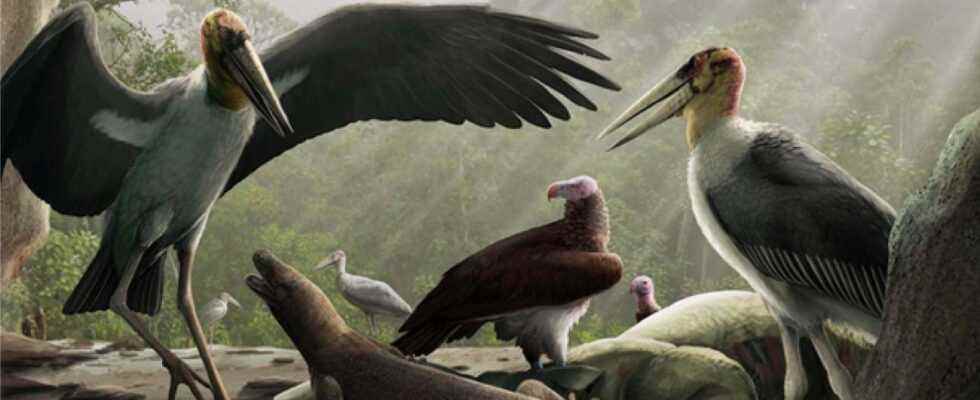The Indonesian island of Flores formed its very own biotope tens of thousands of years ago: with the short Flores people Homo floresiensis, large Komodo dragons, pygmy elephants – and giant storks. The species belonging to the marabou family Leptoptilos robustus Standing more than 1.8 meters tall, it even towered over the island’s human inhabitants. And despite their size, the animals could also fly, as suggested by new bone finds by Hanneke Meijer of the Naturalis Biodiversity Center in Leiden and her team in Royal Society Open Science.
It had long been thought that the species, like other large island birds, might have lost its ability to fly. However, new excavations at Liang Bua Cave on Flores have also yielded bones from the wings. These were sufficiently large and powerful to allow the marabou to fly, the working group concluded. On the other hand, there were no signs of regression, such as those found in other flightless birds such as ostriches or certain rails. Probably nested Leptoptilos robustus on cliffs or trees, from where it was easier to launch and then glide.
Other bone finds in the cave also provided clues to the way of life of the giants and other animals of Flores. In the eyes of Meijer and Co, the pygmy elephants of the species were an essential part of the ecosystem Stegodonwho only had a shoulder height of less than 1.3 meters. The herbivores not only provided for the dispersal of certain seeds and influenced the vegetation, but also provided an important source of food, dead or alive. Flores people, like the Komodo dragons that were still here at the time, hunted them down, and the marabous then ate their carrion like vultures.
Dead elephants probably also lured the storks into the cave, where some eventually died: the mammals were probably looking for water or cooling inside, or were dismembered there by humans, so it is assumed. The leftovers then went to scavengers, whose bones were well preserved by the cave climate.
